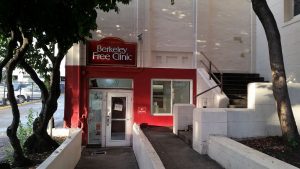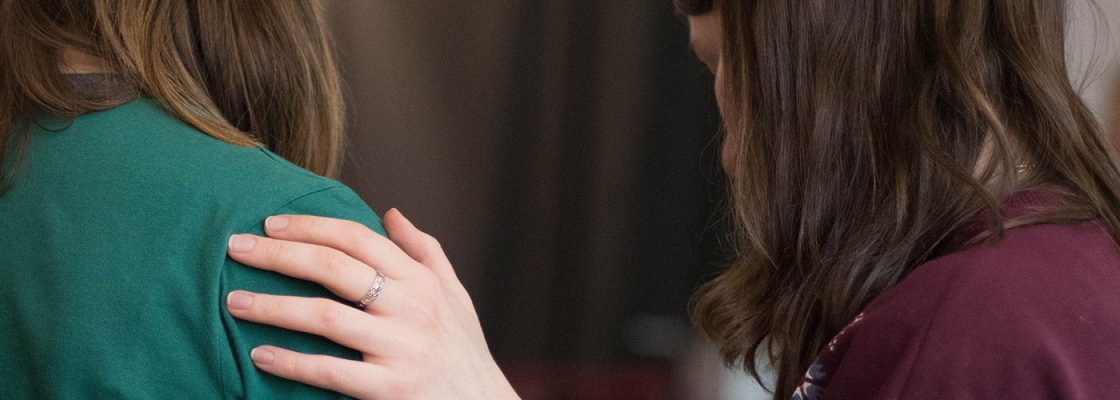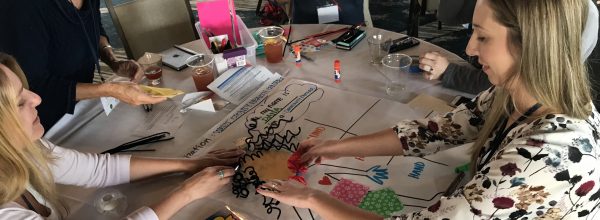I am currently managing two programs where screenings and assessments are considered core elements of the work.
In our ROOTS program, we’re focused on experimenting and testing the role that clinics can play in addressing social needs. Many clinics are using PRAPARE or other screening tools as a stepping stone to respond to identified needs of individual patients. And in our new Resilient Beginnings Collaborative, we’re focused on addressing childhood adversity in pediatric safety net care settings. Similarly, there are screening tools and assessments used to identify and intervene with patients who have or are experiencing trauma. But what we we’re learning through this work is that while screening has its role to play, listening is what we need to be doing to make a real difference in caring for patients.
For example, we recently visited Kokua Kalihi Valley Comprehensive Family Services (KKV) outside of Honolulu as part of our ROOTS program. Throughout the visit, we heard from staff about the importance of listening and talking story with patients and community members. We learned from them that protocols, like screening processes and tools, are important, but so is coming together to eat food and cultivate relationships. They explained how listening is a gift. Perhaps instead of (or addition to) using standardized tools to assess needs, what if we focused on hearing patients by elevating people who have honed that gift of listening?
A lot of what we learned at KKV resonated with my own experiences. For almost nine years, I worked as a lay health worker and peer counselor at the Berkeley Free Clinic, a volunteer-run organization that has been providing free health care and referral services since 1969. I was part of the Peer Counseling Collective (PCC) which is composed entirely of trained volunteers interested in providing free drop-in and long-term mental health counseling to the community. Each peer counselor contributes not only to the job of counseling, but to the overall operation of the collective and clinic.

The PCC’s counseling model is based off of the work of psychologist Carl Rogers and emphasizes the importance of feelings, empathy, authenticity, nonjudgment, and unconditional positive regard. In order to become a peer counselor, there’s a lengthy application process and even lengthier training. Through the training, we learned and practiced some of the “hard” skills of listening: non-verbal attending, reflection, paraphrasing, open-ended and clarifying questions, and summarizing. We practiced (on each other!) how to meet clients where they are at, how to maintain neutrality no matter what is said, and how to maintain our own boundaries. And at the center of our training and philosophy were three key reminders:
- All these “hard” tools and skills are only helpful if you are using them towards being empathetic and nonjudgmental, and being present with the client in the room.
- You’re not there to fix anything.
- There’s no such thing as a “good” counselor: if you are listening, then you are providing a healing space.
We also learned about the role of transference and countertransference. I understand these concepts as the unnamed dynamics present in the counseling room and all the stuff that comes up for the client (transference) and the counselor (countertransference), based on our lived experiences, what we individually bring into the room, and how that causes us to relate to each other, both consciously and unconsciously. Part of the training was focused on doing a deep dive into our own histories, stories, traumas, and prejudices, in order to understand ourselves better. This way, when we were in a room with a client, we could focus on creating a container for learning, reflection, and healing, and mitigate doing harm to the client or ourselves. We learned not to offer up our personal stories or advice or interpret what a client was saying; this allowed clients to tell their stories and be heard in a way that was much different from their normal day-to-day experiences of moving through the world. Our main roles in a session were to:
- Help a client clarify, process, and experience their emotions;
- Facilitate them in finding their own solutions; and
- Provide a safe space to tell their stories.
My time at the clinic had a profound impact on me. It’s what got me working professionally in health care. It introduced me to a community of people whom I treasure. And it transformed my relationships with my family, friends, partners, and strangers. It was truly rewarding work, and it was sometimes thankless and devastating work. A few years into my time at the clinic, a trainee committed suicide the night I was leading a training they were supposed to be at; I’ve learned to mostly move past that experience, but I still carry with me regrets and a commitment to understanding vicarious trauma and what more we can collectively do to support and sustain those engaged in this kind of work. There are clients whose stories are still with me, the good and the bad. I left the clinic in December 2016 after spending almost a decade there, most of that time sitting in a makeshift counseling room in a clinic basement listening to the complex, heartbreaking, and rich stories of strangers who became some of my greatest teachers.
Rogers once wrote: “In my early professional years I was asking the question: How can I treat, or cure, or change this person? Now I would phrase the question in this way: How can I provide a relationship which this person may use for [their] own personal growth?”
In our work moving forward at CCI addressing social needs and trauma, I hope we can remember the words of Rogers and those of our friends at KKV: instead of only focusing on tools, protocols, and processes, let’s focus on building our skills around listening and cultivating relationships to create communities of health, wellbeing, and resilience.
Find this useful or interesting? We’re constantly sharing stuff like this. Sign up to receive our newsletter to stay in the loop.


